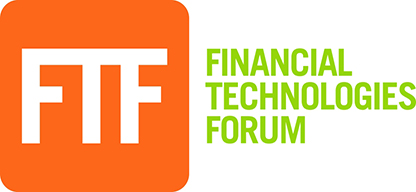Many firms are aware of the direct costs of collateral, but few have a clear view of the indirect or hidden costs, says Wassel Dammak at Vermeg, in a wide-ranging FTF News Q&A.

Wassel Dammak
(The total cost of collateral is often underestimated because it extends beyond the direct cost of the assets themselves, explains Wassel Dammak, head of product strategy, collateral management at Vermeg, in a wide-ranging FTF News Q&A. The total cost of collateral encompasses three key components within any financial institution: technology, people, and processes, he adds. Dammak also explores how Vermeg’s Colline collateral management system is being integrated with artificial intelligence technologies, why Vermeg reinvests 30 percent of its revenue into R&D, and the importance of integrating the Common Domain Model (CDM) into the Colline system. The Colline platform won back-to-back FTF News Technology Innovation Awards: in 2024, it won Best Sell-Side Collateral Management Solution, and, in 2025, it won Best Buy-Side Collateral Management Solution.)
Q: Why was it important for Vermeg to integrate the Common Domain Model (CDM) into its Colline Collateral management system?
A: Integrating the Common Domain Model (CDM) into Colline was a strategic move driven primarily by the need for efficiency and scalability.
Collateral management systems like Colline rely heavily on large volumes of data — including agreement terms, eligibility schedules, and trade exposures. Traditionally, onboarding new clients required significant integration work to map this data from their source systems into Colline’s format. By adopting CDM, which provides a standardized data model, Vermeg aimed to streamline this process.
The first objective was to reduce the cost and complexity of onboarding new clients. With CDM, normalized data can be ingested directly into Colline with minimal or no additional integration effort. This significantly accelerates implementation timelines and reduces project costs.
The second objective was to support our clients who are asset servicers and often act on behalf of multiple end clients. For them, onboarding each of their clients onto Colline can be resource-intensive. By leveraging a CDM connector, they can automate and simplify data loading, making the process more efficient and cost-effective.
In summary, CDM integration enhances both project delivery efficiency and business-as-usual operations for clients using Colline, making it a key enabler of scalability and client satisfaction.
Q: The CDM integration allows for the inclusion of digitized regulatory initial margin (IM) credit support annexes (CSAs). Will Vermeg be expanding the reach of CDM integration? If so, how?
A: Yes, Vermeg is actively expanding the scope of CDM integration within Colline. Following the successful integration of regulatory initial margin (IM) CSAs, we are now extending support to direct variation margin (VM) agreements. This is a natural progression in our roadmap to broaden the types of collateral agreements that can be seamlessly onboarded using the CDM connector.
In addition, we are working on incorporating eligibility schedules into the CDM framework. This will further enhance automation and reduce manual intervention during client onboarding and ongoing operations.
Looking ahead, we are also exploring the inclusion of trade representation within the CDM integration. While this is not yet confirmed on the official roadmap, it is under active consideration as part of our long-term vision to support a broader set of collateral data objects through the CDM connector.
Our goal is to progressively expand CDM coverage to include all key collateral components, thereby improving data standardization, operational efficiency, and scalability for our clients.
Q: Vermeg reinvests 30 percent of its revenue into R&D. Can you share some details about Vermeg’s roadmap? What are some interesting areas that Vermeg is exploring?
A: Vermeg’s significant reinvestment into R&D — around 30 percent of its revenue — reflects our strong commitment to innovation and continuous improvement across our product suite.
Our roadmap spans several strategic areas:
- Digital Transformation of Collateral Services: We are developing digital applications aimed at transforming how collateral agreements are managed. One of these initiatives involves leveraging I. models to digitize collateral agreement services, streamlining processes that are traditionally manual and document-heavy;
- I.-Powered Operational Efficiency: Another area of focus is automating inbound email processing. Instead of relying on manual data entry, we are building intelligent systems that can extract and process information from emails, significantly improving operational efficiency;
- Collateral Optimization Solutions: We are enhancing our capabilities in collateral optimization, helping clients reduce the total cost of collateral by improving how assets are allocated and managed across obligations;
- Central Bank Solutions: Beyond collateral management, Vermeg plays a key role in supporting central banks. A major initiative is our contribution to the Eurosystem Collateral Management System (ECMS), which went live in June 2025 with 22 Central banks. This project is a cornerstone of our public sector market infrastructure offering and requires substantial investment in both product development and regulatory alignment;
- Regulatory and Efficiency Drivers: While the major waves of regulatory change may be behind us, compliance remains a strong driver. At the same time, clients are increasingly focused on efficiency — doing more with less. This includes reducing technology costs, optimizing funding costs, and streamlining processes. Our R&D efforts are aligned with these needs, ensuring our solutions remain competitive and relevant.
In short, continuous investment in R&D is essential for us to meet evolving client expectations, stay ahead of regulatory demands, and maintain a competitive edge in a rapidly changing market.
Q: Firms have been trying to bring down the costs of collateral. What are the obvious and not-so-obvious hidden costs of collateral?
A: So you have three components in every bank — you have the technology, you have the people, and you have the processes. So these are the three main things that would take more time, that would take the collateral cost.
Depending on the way the bank or the institution is organized, you have a lot of silos still today. We have the derivatives, we have the securities finance, we have other models like the principals models and the agency models for offering services.
What we could enhance in terms of cost structure is mainly related to technology. Technology is the service. So, our software-as-a-service (SaaS) offering is a good example of cutting the cost of technology by using the most up-to-date technologies and database layer in terms of application servers, in terms of coding, and so forth. Then we can provide services or tools to lower the cost of the collateral assets, such as automated allocations of the margin code deliveries.
In addition to the tools to enhance the cost structure, we can provide advisory services to our clients from an organizational perspective to show how they would be the most efficient in terms of their organization to manage the collateral processes.
Q: How aware are firms of what you call ‘the total cost of collateral?’
A: The total cost of collateral is often underestimated, as it extends beyond the direct cost of the assets themselves. It includes three key components within any financial institution: technology, people, and processes.
- Technology Costs: These include the infrastructure, platforms, and tools required to manage collateral effectively. Many firms still operate in siloed environments — with separate systems for derivatives, securities finance, and different service models (e.g., principal vs. agency). This fragmentation increases integration and maintenance costs. At Vermeg, we address this through modern, cloud-based SaaS solutions that reduce infrastructure overhead and leverage the latest technologies in application architecture and data management. For example, our solutions support automated margin call processing and asset allocation, which directly reduce operational costs.
- People Costs: Manual processes still dominate many collateral operations, requiring significant human resources for tasks like data entry, reconciliation, and exception handling. These are not only costly but also prone to error. Our roadmap includes I.-driven automation, such as intelligent email processing and digital agreement management, to reduce reliance on manual labor and improve accuracy.
- Process Inefficiencies: Organizational silos and legacy workflows often lead to duplicated efforts, delays, and suboptimal asset usage. These inefficiencies translate into higher funding costs and missed optimization opportunities.
Beyond technology, we offer advisory services to help clients re-engineer their collateral management processes and organizational structures for greater efficiency.
While many firms are aware of the direct costs of collateral, fewer have a clear view of the indirect or hidden costs, especially those tied to operational inefficiencies and fragmented systems. Raising awareness of the total cost of collateral is a key part of our value proposition, helping clients make more informed decisions about their technology and process investments.
Q: How will A.I. help with this problem?
A: We’ve integrated A.I. into Colline at three distinct levels, each designed to enhance user experience, operational efficiency, and decision support:
- AI-Powered Chatbot (User Assistance Layer): At the most accessible level, we’ve embedded a chatbot within Colline that acts as a digital assistant for users. It provides instant answers to common operational questions such as: How do I book a trade? How can I allocate collateral? How do I install a module? This reduces the need for training and support, empowering users to find answers quickly and independently;
- I. Assistant for Data Oversight (pattern recognition layer): At a deeper level, we’ve developed an A.I. assistant that monitors user behavior and data patterns. It helps identify anomalies or changes in operational habits. For example, if a user has consistently allocated margin calls in U.K. Gilts for a particular counterparty over the past three months, and suddenly allocates cash instead, the system will prompt: “You’ve been allocating Gilts for this counterparty and event. Is there a reason for switching to cash today?” The user can either confirm the change or provide a rationale, and the model will learn from this feedback. Importantly, the final decision always remains with the human user — A.I. simply acts as a smart assistant.
Over time, the A.I. models learn from user interactions and decisions, becoming more accurate and context-aware. This supports better decision-making, reduces operational risk, and enhances consistency across processes.
So, A.I. in Colline is not about replacing human judgment — it’s about augmenting it with intelligent tools that improve efficiency, reduce errors, and support smarter collateral management.
Q: What is the third level?
A: The third level is the most advanced and forward-looking — it involves A.I. reasoning agents capable of performing autonomous decision-making for repetitive, logic-based tasks. These agents go beyond simple automation. They are designed to observe patterns, apply reasoning, and take action based on historical behavior and contextual understanding. For example:
- Suppose Colline receives a portfolio of 85 trades today, whereas it received 100 trades for the same counterparty yesterday. The system detects this discrepancy and raises an alert: “There may be an issue with today’s trade extraction. Would you like to investigate?”
- In a traditional setup, a user would manually send an email, trigger an application programming interface (API), or initiate a reconciliation process. With reasoning agents, these steps can be executed automatically— the agent can send the email, launch the API, and initiate reconciliation without human intervention.
This level of A.I. is designed to handle repetitive tasks that require light reasoning, where the logic is consistent, but the actions still require some contextual awareness. It’s not about replacing human oversight but freeing up users from routine tasks so they can focus on higher-value activities.
This capability is currently part of our R&D roadmap, and we see it as a key enabler of the next generation of intelligent collateral management.
Q: Does the addition of A.I. at a time of uncertainty in the markets help as they’re looking to better manage their collateral?
A: Absolutely. One of the greatest strengths of artificial intelligence is its ability to learn from past events and avoid repeating mistakes. Unlike manual processes, AI operates 24/7, continuously monitoring data and market conditions, and reacting in real time.
In volatile markets, this becomes especially valuable. For example, if a model has previously experienced a market shock, it can simulate similar scenarios through what-if analysis. It might ask: “What happens if my mark-to-market (MTM) values drop by 25 percent? What additional collateral would I need to mobilize?”
A.I. can then assess the agreements in place — perhaps identifying that only cash collateral is accepted — and determine the best course of action. Should the firm liquidate positions? Should it maintain a buffer of cash in a virtual long box to meet potential obligations?
This kind of predictive insight and rapid response is critical in uncertain environments. A.I. doesn’t just react — it anticipates, helping firms prepare for stress scenarios and make smarter, faster decisions when they matter most. In short, A.I. enhances resilience, agility, and foresight in collateral management — all of which are essential during periods of market instability.
 Q: Why should financial services firms care about Vermeg’s many initiatives and outreaches? How will these forward-looking efforts change how your current and future clients manage collateral?
Q: Why should financial services firms care about Vermeg’s many initiatives and outreaches? How will these forward-looking efforts change how your current and future clients manage collateral?
A: If you look at Colline, it was launched in 2004, and we have had clients for 20 years now. It has been a journey of partnership with clients as Colline was launched by practitioners at banks. They worked closely with technology people to provide a solution that could really help the banks navigate collateral management aspects. It was also driven by many waves of regulations, with EMIR, Dodd-Frank, and others.
So what we have been doing is to help our clients automate their processes, comply with regulations, and also meet business requirements. We are here to support their trading, their strategies of revenue generation. And we have been building that in partnerships with major clients, major banks, tier two banks, and global banks. But also, we have one single solution for all our clients. So all the other clients will benefit from that as well. And we have been doing that for the last two decades. So we have a good, solid track record, a solid footprint, and we are one of the leading solutions in the market. And that’s why we think that we are in a good position to help our clients and other financial institutions.
Vermeg’s initiatives are rooted in three decades of experience and partnership with the financial industry. Since the launch of Colline in 2004, we’ve worked closely with clients — from tier-one global banks to regional institutions — to build a solution that is both practitioner-driven and technology-enabled.
Our journey has been shaped by evolving regulatory landscapes (EMIR, Dodd-Frank, etc.) and the growing complexity of collateral management. Throughout, our mission has remained consistent:
- Automate and streamline operations
- Ensure regulatory compliance
- Support clients’ trading and revenue strategies
What sets Vermeg apart is our single, unified solution — all clients benefit from the same platform, which means innovations and enhancements are shared across the entire client base. This creates a powerful network effect where every improvement benefits the broader ecosystem.
Our forward-looking efforts — including A.I. integration, digital transformation, and collateral optimization — are designed to help clients future-proof their operations, reduce costs, and respond more effectively to market and regulatory changes.
With a proven track record, a strong global footprint, and a deep understanding of client needs, Vermeg is uniquely positioned to support both current and future challenges in collateral management.
Need a Reprint?
